Kettle’s Yard: A Tour Through Cambridge’s Modern Art Gallery
Kettle’s Yard, a somewhat modest home in the middle of Cambridge, UK, harbors an impressive art collection of predominantly modern and abstract...
Ruxi Rusu 24 June 2024
27 September 2021 min Read
In 2016, an interesting project took place in Busteni, a town in the mountains of Romania. Sculptors from various countries gathered to work on the streets, giving passers-by insights into the process of modeling blocks of marble or metal. Some of the works created then now feature in the 2021 contemporary sculpture exhibition in the spectacular gardens of Cantacuzino Palace.
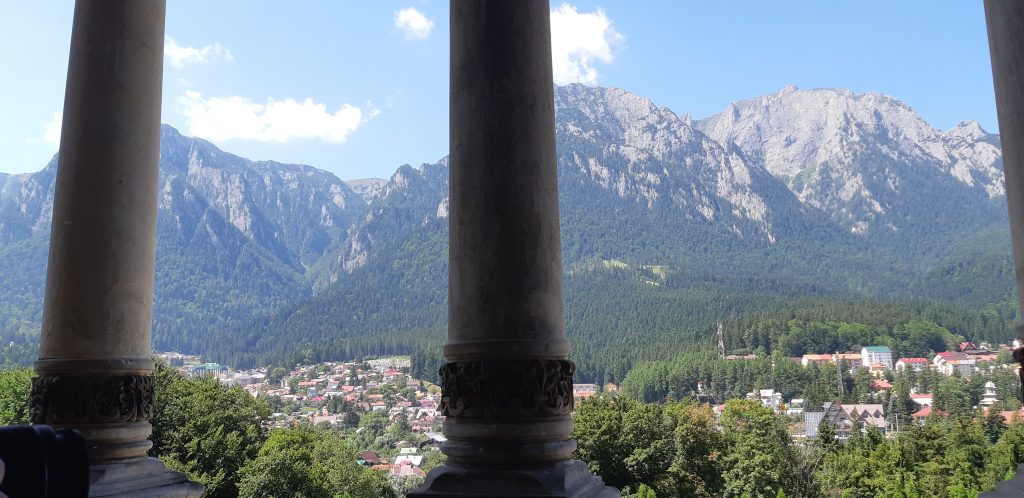
Cantacuzino Palace was completed in 1911 and was built according to the neo-Romanian style by the architect Grigore Cherchez, at the request of Prince George Grigore Cantacuzino. The neo-Romanian style appeared around the turn of the 20th century, when artists sought a way of reinventing old traditions, mainly by including elements from the Art Nouveau style.
The palace was built in a high part of the town, on the mountain slopes, so visitors could admire a breathtaking view of the opposite mountains from the many rooms and balconies, as well as from the garden, which features a number of ponds and an artificial cave, among other things.
As visitors experience the grounds surrounding the palace, imagining how the people 100 years before admired the view from the central balcony outside the ballroom, they are now greeted by another element which adds to the magic of the place: the sculptures of a number contemporary artists from Romania, as well as other countries, such as Argentina, Taiwan, Russia, China, Egypt, and France.
All of these works have an abstract character, based mainly on geometrical forms. With angular or more rounded shapes, their titles refer in many cases to the emotions or experiences that constitute the essence of being human. The austere material, which showcases the natural indentations and holes of marble, blends perfectly with the richness of the materials used in building and decorating the palace and enhances the effect the works have on the on-looker.
Here are a few highlights from this contemporary sculpture exhibition:
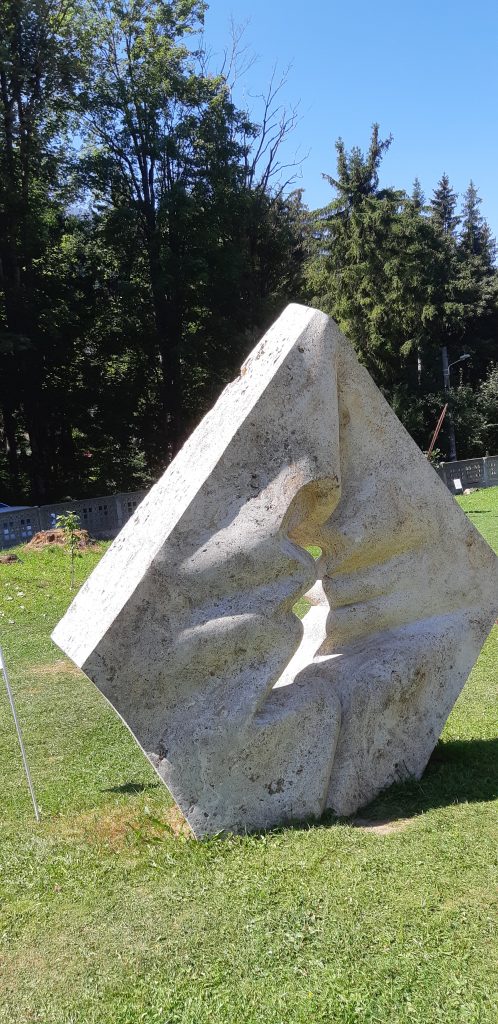
This sculpture is inspired by a quote from a poem by the Persian poet Rumi:
“Creatures are set in motion by love, love by eternity without beginning, as the wind dances due to the celestial spheres and the trees due to the wind.”
Agnessa Petrova was born in 1968 in Bulgaria. She obtained her PhD in Art History from the Fine Art Academy in Sofia, Bulgaria. Her activity includes the participation in many symposiums as well as in numerous projects and exhibitions. She often works with granite, a material linked to the raw power and endurance of time, while depicting rather evanescent or barely visible subjects.
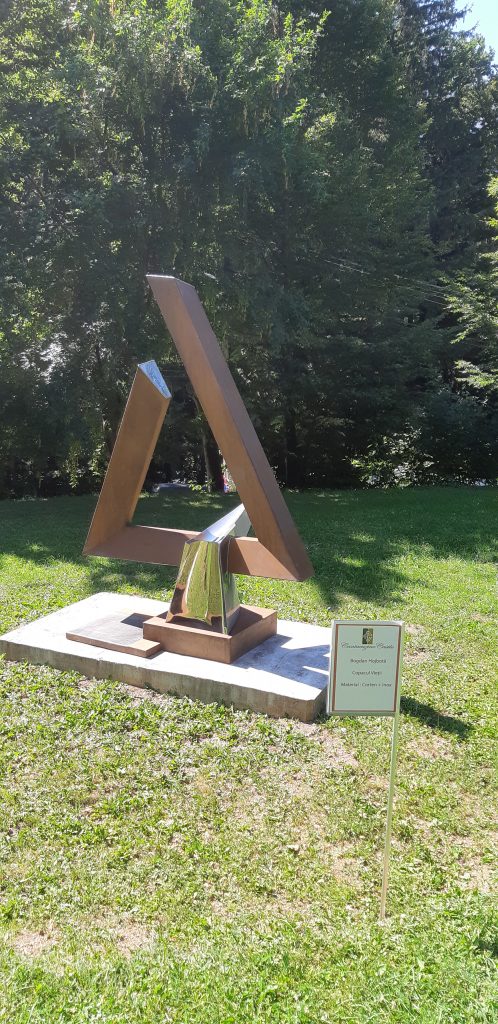
The Tree of Life is made of inox and corten steel, an interesting combination which replicates the aspect of an actual tree, while at the same time enhancing the abstract quality of the work. Thus, people can more readily feel the spiritual significance of this ancient symbol.
Bogdan Hojbota is a Romanian sculptor who has participated in numerous group exhibitions and who has also organised a number of solo exhibitions in Romania and Germany (Bucharest, Nürnberg, Köln, Neumarkt, Klausenburg, among others).
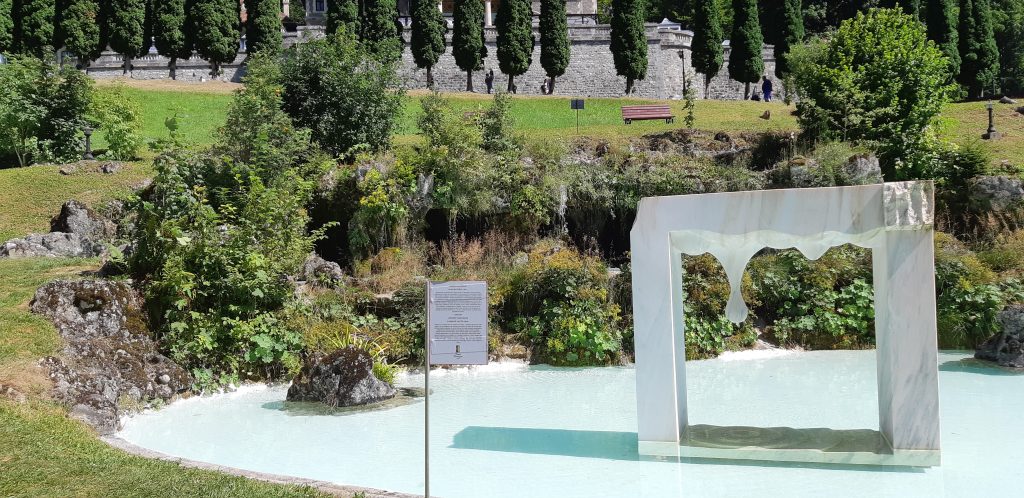
Natural Passage is an homage to Constantin Brancusi, greatly admired by the artist and whose work can be found in the contemporary sculpture exhibition. Through this work, he shows his adhesion to the principle which the Romanian sculptor also shared: a sculpture is not a work which can be projected as in a photograph, but must be viewed by taking into account its separate parts. The work of Naegeler is composed of three sections, which create a harmonious whole out of 15 tones of marble.
The sculpture is placed in the pond in front of the artificial caves, made of rocks brought from the nearby mountains (as you can see in the photograph above).
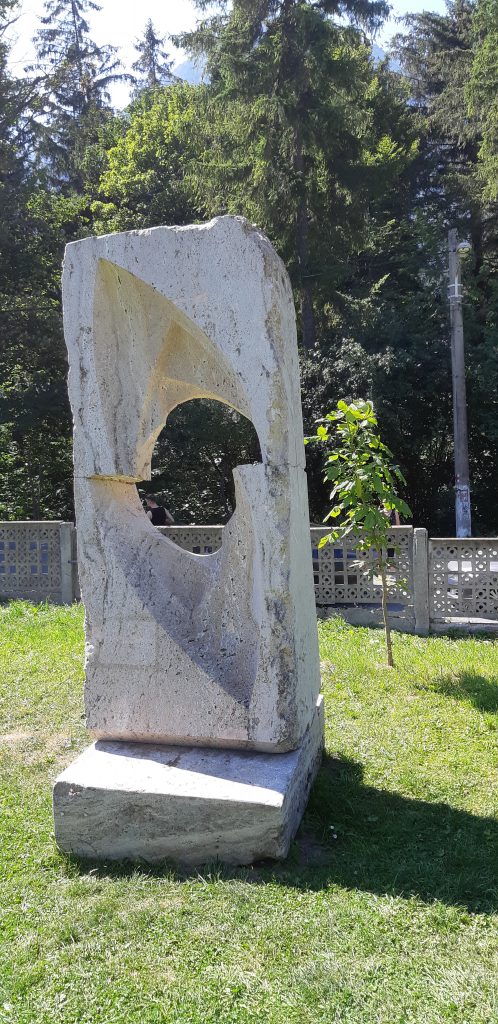
This sculpture has a conceptual character, but refers to the natural world, namely the desert in North Chile and the ancestral traditions of people who live or lived there. The material itself could be interpreted as a symbol of power and endurance. The different mythological sources blend into an abstract representation which, above all specific legends, seeks to transmit the solitude, vastness, and grandeur of desert lanscapes.
José Miguel Fonseca was born in Santiago, Chile and has studied at the Art School University of Chile. As a sculptor, he has participated in numerous exhibitions and symposiums.
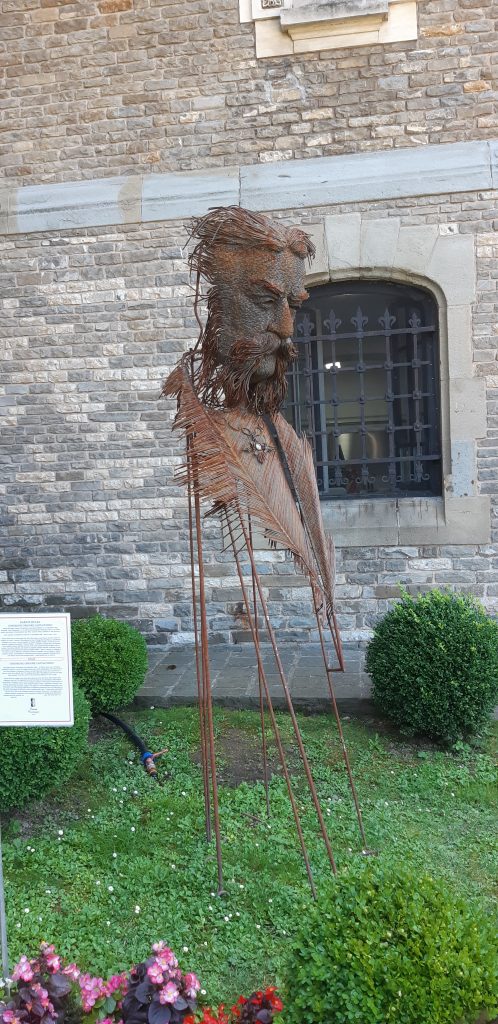
In many of his works, Darius Hulea reinterprets traditional subjects of sculpture. He retains a fascination for human anatomy, which he depicts in a less common material, iron. What is more surprising is that his sculptures are made of wire, which often lend the figures a certain fragility. This is certainly the case with the one exhibited at the palace, which depicts a member of the noble family who ordered the construction of the building.
Darius Hulea was born in 1987. His works can be seen, along with other exhibitions, in three personal exhibits in Romania: Principalis, The Sign on the Face and Outline. Sign on the Face.
These are a few of the works in the contemporary sculpture exhibition you shouldn’t miss if you have the chance of visiting the Palace.
DailyArt Magazine needs your support. Every contribution, however big or small, is very valuable for our future. Thanks to it, we will be able to sustain and grow the Magazine. Thank you for your help!